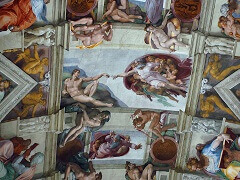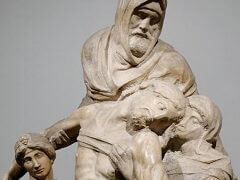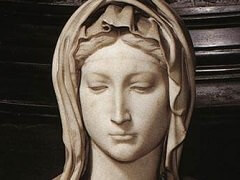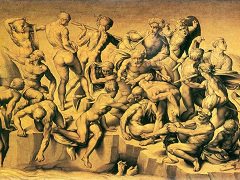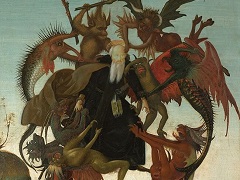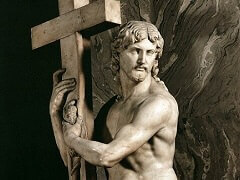Angel, by Michelangelo

Angel is situated at the base of the lower register of the shrine a cornu Evangelii in a pose symmetrical to Niccolo dell'Arca's corresponding Angel; together they flank the reliefs of Alfonso Lombardi's (1532-1536) marble predella, although because of the 17th-century positioning of the monument, they are not completely successful.
As compared with Niccolo, who, through the ornate plastic development of his Angel, because of the abundance of curls and effusion of the drapery with its very wide folds, revealed close attention to the international Gothic, Michelangelo instead chose a very sound distribution of the body volumes, within which, for as much as the dimensions of the block would allow, the front view shows the start of the body's rotation.
The sturdy build of this young athlete, who spreads his knees apart as he genuflects, and twists the upper part of his body while keeping his neck and head straight, can be discerned through the thick folds of the tunic fashioned. Moreover, the considerable diameter of the candelabrum, which features a typically Florentine spindle shape and was intended to hold a holy water stoup or font, is suggestive of some kind of weight, which the angel's strong hand just manages to hold on to. Below a cap of thick curls, the angel's full face turns to the faithful with the rapt and somewhat astonished expression that comes from combining the way he stares off into the undefined distance and his slightly opened mouth, showing teeth and lips.


